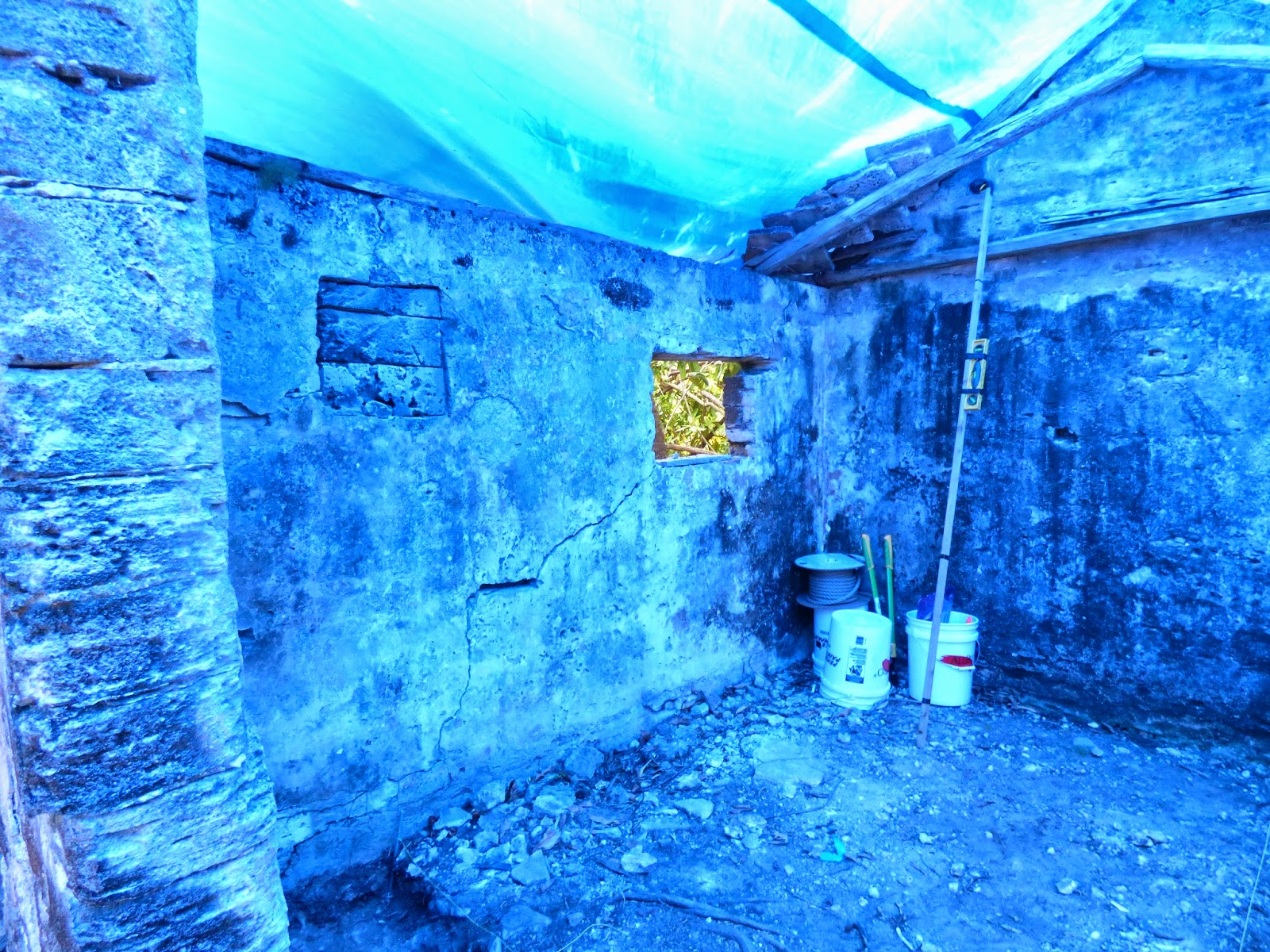Transitions, Luck, and the Third Gelato Cup
 |
| The surreal blue of the walls comes from our tarp. Diggers look like Smurfs |
Jim is seeing if Cotton Hole Bight can yield evidence of the first three Bermudians (c. 1610) with Alice, Mimi, Sam O. and Luke. Andrew and Sam M. are taking on the new cave site with me.
 |
| Taking out a pesky Spice tree with a borrowed chainsaw (thanks, Danny!) |
Our incredible run of luck has continued, with no rain days at all this year. Our boat commute on Wednesday morning was on a calm day at dead low tide, and as we rounded the nasty shoal halfway across, I saw through the clear water that it wasn't a shoal at all, but rather a pretty big shipwreck! We later snorkeled around it, circled its ballast pile and followed its lengthy keel, marveling at the history literally right under our noses unnoticed every day. Copper sheathing, iron pins, wooden hull and capstan all suggest a 19th century date.

A few hours later, another stroke of good fortune occurred when I ran into two W&E guys on the island, one of whom had a GPS transponder in his hand - accurate to about 1cm! Chris Doe was kind enough to take time out to shoot in points at each of our four sites, allowing us now to precisely locate our local site maps into ArcGIS and other data platforms. Jim laid out four units in a new east-west trench to test the hypothesis that the 18th-century quarrying we discovered in 2012 that had occurred in the heart of Cotton Hole Bight site would first have necessitated shoveling off any earlier floor and architectural remains downhill to the east, which would then have been buried by the quarrying waste rubble: we may have lost the earlier floor in situ, but still could potentially recover it redeposited and perhaps under that a surface refuge scatter.
Leigh laid out two new units inside Smallpox Bay site and another four outside in front, working on the theory that, given the lack of a fireplace in the ruin, food preparation likely took place in the open outside and nearby. A close look at the interior north wall of the ruin also provided evidence that this structure was government or imperially related, rather than a private domestic site: we could make out very large initials "GR" with a broad arrow underneath: Georgius Rex and the mark of the Royal Navy.

And at the Cave Site, we cleared away the area and established a unit across the southern opening. Lots of metal detector hits and an initial examination of the interior of the cave suggest a fairly thick layer of fill.
 |
| Chisel marks in the cave's roof, revealing that it was formerly worked to enlarge it or smooth out its interior |
More about our day-off tours of Orange Valley, Sherlock, and the tall ship Virginia tomorrow, but I can report that the Third Gelato cup was the closest one yet: Team Jim: 823, Team Leigh: 825!
The gelato was deferred until tomorrow, when we will have a Solstice Party on St. Catherine's Beach after work.
For all loyal Bermudian followers, the Bermuda National Trust is running tour boats out to our sites on Sunday from 2-5pm: http://www.bnt.bm/images/SmithIsland.jpg.
And on Wednesday, we will be giving a public lecture presenting our findings and conclusions at the end of the 2014 season at the St. George's Foundation's World Heritage Center between 7pm and 8pm: https://www.facebook.com/stgeorgesfoundation/photos/gm.291853557653600/833620193317743/?type=1&theater




.jpg)
Comments